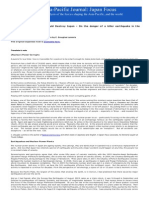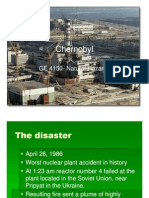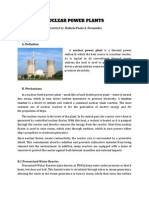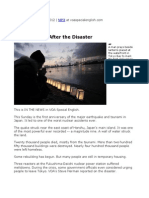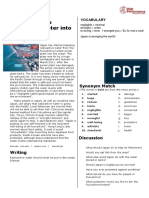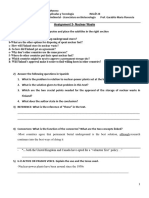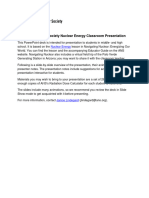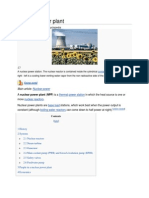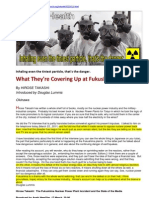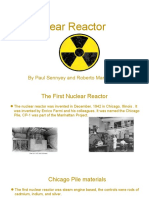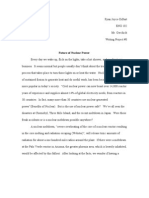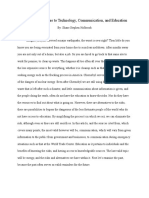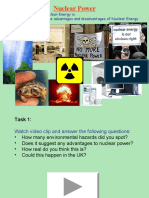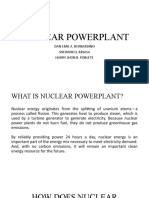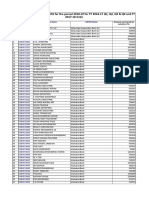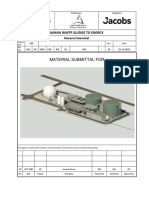CHAPTER 5
PIROCESS ESSAYS
To write academic texts, you need
to master certaifl skills.
In thls chapter, you Will learn to:
• Analyze a process e,ssay
• Organize steps in a process
• Oonstnicia thesiS statement for
aprocess�y
• Use transitfon slgnals to shGw
chronological order
• Write, revise, and edit a process
essay about earth scl1111ce
Nuclear power is a conlnroersial source of mcrgy.
1
�INTRODUCTION
In this chapter, you will learn about writing a process essay. This type of essay is
written to explain processes and procedures, such as how something works or how to
do something. In fact, a process essay is sometimes called. a ''h.ow to" essay.
The information in a process essay is almost always presented. in chronological order,
or time sequence. For example, you would use chronological order to explain h.ow
to take a photograph, how to perform a chemistry experiment, or how to set up an
accounting system. You would also use chronological order to explain processes such
as how a snowflake forms, or how a piece of equipment operates. At the end of this
chapter, you will Wt:ite a process essay about a topic related to earth science.
ANALYZING THE MODEL
The writing model is a process essay. It explains two processes involving nuclear
energy. As you read the model, look for t)le two protesiies. Before you read the model,.
look at this diagram.
reactor core steam generator
control ated turbfnes
rods ter jgeneratorJ
fuel
rods-
cooling
towers
2
�Read the model. Then answer the questions.
Writing Model
Japan's Nuclear Crisis
1 Nuclear power is often used to generale ,electricity for twenty-first century
nceds. lt is produce,d foi this purpose by commercial noel.ear reactors in nucaear
power plants. lo general, these reactar:.:are reliable-and efficient. Still, dangerous
accidents or oiherserlous problems can occur; so nuclear reactors must be built
to withstand everything from �lmican� to terrorist 11ltacks. Unfortunately,
these safety measures are.not always adequate. Shortly afler an earthquake hit
Japan on March 11, 2011, a ehain of events led to explasions at the Fulrnshima
Da:iiii::bi nuclear plan.t. To under:stand bow the accident at Fukushima hap�ed,
it is neces:,ary to unde�land how a noel.ear reactor is cposLructed and operate5.
2 A nuclear rea<itor produees enet� th:i:o u'gh a ·nuclear reaction called fission.
or the splitting of atE�ms. React0rl1 generally use uranium ato1J1S for the fission
prooess. first, small pieces of uranium are combined in metal tubes kno',¥11 as
fuel rods. Many bundles of fuel rods form the reactor's core. As lission occurs.
the uranium atoms in !he fuel rods are-split, and energy in the fom1 of heat
is g�neratecj..
3 Rowever, too much heat can be dangerous. To regulate the heat generated
by a reactor, fuel rod� are Interspersed with control rods. These are made of
materials such as boron, which slo'Y nucl, w,reactions, W}len µie control mds
are pushed into Lbe. reactor co� fission slows, and the reactor cools. When
the control rods are pulled out, fission speeds up, and the reactor produces
more he:u.
4 The heat from the rel\<;to,r is !hen, channeled to a oontaincr of water called a
steam generator. In a steam generator, heat is used lo boil water and produce
steam. Next, the steam tums a turbine, which powers a generator that oniafes
electricity. Finally, the water is recirc, ulated through the system with electric
pumps to cool the reactor core. This cooling process is imponant beoa11se,
if ll!le fuel rods get too 'llot, the fuel can melt. A ''meltdown" can destroy the
Walls of the reactor. lt Cl\11 allow
' nuolc� tadlali9n to esdape
• and poison the
su�unding area.
s When the earthquake hit the,Fukushima Daiichi nuclear power plant in
Japan, there were many systems in place to prevent this kind o[ disaster.
First, the reactor's con.trol rods. were fully ins.erted into the reactor core. This
procedure a utomatically shut down the reactor. The shutdown helped to
cool the reactor coro. but of course·it also made the nuclear power plant stop
producing power. With no power, the elecu:ic pumps in the co9li 'ng system could
not function. As g. result, µi.e core .soon heated up again.
(conHnued 011 next page)
3
�6 Ontc the plant itself slopped producing power, it began Lo draw power from
t)Je nalion's power grid' to run the pumps. 0lher PQWer plants atound the
country, nuclear and nonnuclear, wc(e still producing electricity. Unfo.ttunatc!:ly,
the earthquake had a:lso damaged the pdwer grid. It, too, soon stopped
providing power to the Fukushima Daiichi P,Umg&; At (his point, tbere was $Lill
one mort: safety sys1em that could pi:event meltdown: backup diesel generators.
These.machines use diesel fuel, instead of nuclear power, to make electricity.
The clie--.el ge'nerniors had sto.'rted to make electricity to run the plant's cooling
pumps when anot.l),er disaster occurred. Fukushima Daiichi was bit with a
tsunami, er giant wave, caused by tlie earthquwce. The tsunami flooded the
generators: This left only ,batteries to operate tbe pumps. They lasted for just a
few hours before the): ra11 out of power.
7 After the bati.eries dfod, the pumps failed once and for all. They could no longer
circulate water to cool the reactoL As a result. the water started boiling away,
exposing the tops, of the fuel �ds. Then 1.1),e metal tut?es holding the uranium fuel
overheated and split. The cracks allowed the remairung water to enter the tubes
and interact with the fuel. This interaction began genernting hydrogen gas. The
hydrog_en accumulated so quickly that it exploded inside lhen:actor building. To
prevent di�aster, operaiors decided to destroy lhe reactor in a flood of seawater
mixed with boron. The seaw.iter reduced the �tor's temperature while the boron
stopped the process of noolear .fission. A meltdown was prevented.
e As these events show, nuclear !)qWl!r is a resource witligreat pQtcntlal, but
in some circumstances it still can have S!:r(ol\;S ris\cs. Prior to the earthquake
and tsunami. Japan had planned co increase its use of nuclear power. It iS'now
unlikely that a large increase can hapJl(lll. II is also unclear bow much of lhe
ooanu,y's puclear �tructure"wiJJ be rebuilt, and it is still unk:nown. lli:hetber
lhe Japanese p,eople are open to continued reliance on nuclear fuel.
Sowces:
l.. Brain, Marshall a11d Rob!>rrlamb. "H.ow Nuclear Pnwer Works-"
2. "Explaining Nuclear llnergy fat Kids." T/lt Washm,�tpn Po.-i.
3, •Jllp•n to llcr�p Nll.l'lear Energy in 1/avor of Renewables." Tht G"u,1rdiJln.
4. T1mm<"[,Jol;m. �onde.rstanlling Japan·s N11cl�r Cdsls. •
5. "Uranium.'' Et1J!rgy /Gds, U.S. E,icrgy lnfol'Dllllion Adminisl:@lion.
thesyslem for �rryh,g electrlcal PQ\1/eraround l.hecounqy
1 power grid:
• infrutrudutt! the �� �terns and strq<tures thata count,:y or organi2at!on
needsln order to wod< piop.edy, for example road$, railways, and banks
Questions about the Model
1. What is the thesis statement? How does it indicate that at least part of
this essay will use chronological organization?
2. What two processes are explained?
3. Wh.ich paragraphs explain the first process? Which paragraphs explain the
second process?
4. What kind of introduction does this essay have--"funnel" or attention-getting?
5. What kind of conclusion does it have? Does it summari7,e the main points or
paraphrase the thesis or is it a dilierent kind? Does it give a final comment?
4
� Noticing Vocabulary: Word Parts and Word Families
Chapters 1 and 4, you learned about word families and suffixes. You also learned
at words in a wo!'d family often have similar meanings but are different parts
of speech.
Words in the same wo.rd family are related. because they share the same basic part,
called a base word or word root. Base words-for example the verb act-can stand
alone as wo.rds. (Ac! is the base of words like action and actor.) Word roots, however,
cannot stand alone. For example, the root struct-the root of the word structure-is not
a word.
Prefixes, like roots and suffixes, are wo.rd parts. Prefixes can be added to the beginning
of a word's base or root to modify its meaning. for example, the prefixes con and de can
be added to the root struct to create construct and destmcl. Constmcl and destruct have
different but related meanings.
Notice the words reactor and constructed in the model. These two words have both
a prefix and a suffix added to the base or root. Understanding how words in word
families are built from word parts can help you expand and enrich the vocabulary you
use in your writing.
PRACTICE 1 Recognizing Word Parts
0 Find words in the model that use one or more of the word parts in this chart.
..
Write at least ten words.
PREFIX BASE OR Roor SUFFIX
act le
COIi mat Ing
ex pose ly
tt source or
struct
€) Now write a definition of each word. Use a dictionary as needed. Notice how
the meanings of the words in a word family are related.
5
�ORGANIZATION
Like other essays, a process essay includes an introduction, a body, and a conclusion.
What's different about a process essay is that it's usually organized into steps. You
must discuss the steps in your process in the order in which they occur. Otherwise,
readers will be confused.
It's usually a good idea to figure out what steps you want to include as soon as you
decide on your topic. Then you'll be prepared to write your thesis statement and
decide how many paragraphs to include in your essay's body. Here are three important
points to remember in organizing a process essay:
• Write a thesis statement that names the process and indicates
time order.
• Discuss the steps in your process in the order in which
they occur.
• Use chronological order signal words and phrases to indicate the
time sequence.
THESIS STATEMENTS FOR A PROCESS ESSAY
The thesis statement for a process esi;ay indicates that chronological order will be
used. Statements often use verbs like plan, develop, and evolve or expressions such as the
process of, the procedure for,five stages, and several steps.
Follow these steps to make a beautiful ceramic vase for your home.
The field of genetic engineering has developed rapidly in the past ten years.
Heating water by solar radiation is a simple process.
Sometimes the thesis statement tells the number of steps in the process.
The process of heating water by solar radiation Involves three main steps..
The the:us statement may even name the steps.
The main steps in the process of heating water by solar radiation are
(1) trapping the sun's energy, (2) heating and storing the hot water, and
(3) distributing the hot water to its points of use.
6
� PRACTICE 2 Creating Thesis Statements for Process Essays
Check (✓) the thesis statements that suggest the essay will describe a process
or a procedure. Then, in the checked statements, circle the words that indicate
chronological order.
l!f l. A child learns to handle responsibility in a series of smal�.
□ 2. Both heredity' and environment contribute to a person's intelligence.
□ 3. There are two main reasons that governments should provide free higher
education for their citizens.
□ 4. The procedure for submitting expense reports has recently changed.
□ 5. The tensions that led to last year's student riots had been developing for
several yeat. s.
□ 6. Some cultures have very direct interaction styles, while other cultures are
more indirect.
□ 7. Two of the busiest travel days in the United States are the Wednesday before
and the Sunday after Thanksgiving.
D 8. CuJtures celebrate the end of wi.nter and the arrival of spring in different ways.
D 9. The preparation of the poisonous puffer .fish for eating i s a delicate process
that is not for amateur chefs.
□ 10. The life cycle of the monarch butterfly is an interesting phenomenon.
TRY IT OUT' Choose five topics that you think would be interesting for a process essay.
Write thesis statements for the five topics you choose on a separate sheet of
paper. Remember to use words that suggest time order.
TOPICS
• How to take a good photograph
• How to research a topic for an essay
• How diamonds are processed from a diamond mine to a
diamond ring
• How to perform a particular chemistry or physics experiment
• How to transplant a tree
• How a hybrid automobile works
• How to overcome a fear
• How to celebrate a special occasion (such as a favorite noliclay, a
birthday, a wedding, an anniversary)
1
heredity: the process by which mental.and physical qualities
are passed Erom a parent to a child before the child is born
7
� ,,..
BODY PARAGRAPHS IN A PROCESS ESSAY
You discuss the steps i n the process or procedure that you are writing about in your
body paragraphs. You may want lo discuss each step in a separate body paragraph,
or you may want to group the steps. If you need to include a lot of information about
a step, adding details that will help your readers understand how to do it or how it is
done, you can present that step in a sepatate paragraph. On the other hand, you can
discuss sev
. eral steps in a single paragraph if do.ing so helps clarify the process.
To write about how to ma.ke a ceramic vase, you might divide the body into
four paragraphs.
I. Introductory paragraph
II. Body
A. Shaping the vase
B. Flrst (bisque) firing
C. Glazing
D. Second firing
Ill. Concluding paragraph
In the paragraph on "shaping the vase,'' you might include details in time order such
as placing the day on the pottery wheel, shaping the form of the vase, hollowing out
the center of the vase, and creating the rim of the vase.
PRACTICE 3 Identifying and Organizing Steps
0 Choose the topic that interests you most. Then list five or more steps you might
include to describe the process. Write the steps on a separate sheet of paper.
• Achieving a high grade in a class
• Setting up a wireless network of computers and printers
• Helping someone who is having a heart attack
• Organizing a community garden
0 Look at the steps you listed in Part A and put them In chronological order.
Decide which steps will require a separate paragraph and which can be
grouped together.
0 Choose one of the steps you listed. On the same paper, write a list of details
you will include to explaln the step.
Writing T,p
Make ,sule you use the right verb form for the � o! process essay YcQU are writing.
• IJse the imperatil/8 form to teU how do to-something
First, pla?;e lfHI Glay on the f:19tte,'y wheel,
• Use !he simple Pf8Sl!!ll to ·say how somethlng works.
A GPS system recelv&s signals frC5m a satellite.
• Use lhe simple past to tell how something h�.
The earthquake damaged the PfJ,wer grid.
8
� TRANSITION SIGNALS FOR CHRONOLOGICAL ORDER
hronological order signal words are especially important in a process essay. You have
o be very clear about the sequence of steps: Does one step happen bef ore, after, or at the
same time as another step? Chronological order signals include all ttime expressions.
I
CHRONOLOGICA� ORDER S1GNAL Worms EXAMPLES
ANO PHRASES
first; first of all, second, third, etc. First, choose a destination for your camping trip.
then, next, after that, soon, later, later on
meanwhile, at the same-time, now Meanwhile, have a sup.Ply of clean rags ready.
gradually, eventually Gradually increase your child's allowance.
finally, Jast, last of all
SuaoR 01NATORS E>AMPLE,
after since After you have chosen a destination, make a list
of equipment .and supplies that you will need.
as 111\1il
Praise your child when he or she does something
as soon as when
well.
befo re while
Ornrns ExAMPLLS
I
the first (second, last, final) ,step The last step is to deco.rate the cake.
on the third day
later that morning
for five minutes �ntinue stia:ing the soup for five minutes.
in2012 In 2012, scientists announced a major discovery.
several yeam ago My parents emigrated to the United States several
years ago.
a few weelcs later
in the next (past, last) 15 years
PRACTICE 4 Identifying Chronological Order Signals
Ren!ad the writing model on pages 103-104. Find and circle all chronological
order signals, including time words, time phrases, and time clauses.
9
�PRACTICE 5 Using Chronological Order Signals
Read "How to Make a Model Volcano." Complete the paragraph using
chronological order signals from the box. Add commas where necessary.
after It erupb once the paint hu dried
after the oatstde of the eeamd
volcano is complete then
fmally when the vinegar meets
fh:st the baking soda
next
How to Make a Model Volcano
When a volcano erupts, gas &om under the earth bubbles
up to the surface and forces hot lava above the ground. It is an
irnpressive sight, and there is much that volcanoes can teach us
about physics and earth science.
To learn more about how volcanoes work, you can follow a process to make a model volcano
out of a few common nousehold materials. _______ take a jar or a bottle and cover
it with clay or paper-mache. _______ mold the covering in:to the shape of a volcano
and decorate it so that it resembles a volcanic mountain. _______ use small twigs to
create miniature trees and pebbles to mimic boulders. You can use any leftover material to make
other small hills surrounding the volcano. -------Spray or paint it with shellac or
waterproof varnish. This will enable you to clean the volcano more effectively _______
_______ fill the bottle most of the way with warm water. _______ add
red food coloring to mimic the color of lava and dishwashing soap -to
create bubbles. _______add baking soda. Baking soda contains
sodium bicarbonate, which supplies the carbon for the carbon dioxide gas
that will make the volcano erupt. When you are ready for the eruption,
pour some vinegar into the bottle. _______ a chemical reaction
happens, and carbon dioxide is released. The carbon dioxide gas bubbles
up and pushes the liquid out of the bottle, causing the eruption.
10
� /Applying Vocabulary: Using Word Parts and Word Familes
Understanding how words are built from word parts can help you expand your
vocabulary and use words correctly in context. Of course, if you are unsure of a word's
meaning or spelling, you should check the word in the dictionary before using it in
your writing.
PRACTICE 6 Using Word Parts and Word Familles
O Combine the word parts to make at least frve words. (Try not to repeat the
words you wrote for Practice 1 on page 105.) Remember that word parts may
slightly change in spelling when combined.
PREFIX BASE OR Roor SUFFIX
1111D
COil
act
mat I le
pose
source or
struct
1.. ----------
2. ----------
3. ----------
4___________
5. ----------
Cl) Choose five words from Practice 1 on page 105 and Part A above. Use each
word In a sentence that you might use to describe a process.
1. -----------------------------
2. _____________________________
3. -----------------------------
4. -----------------------------
s. ----------------------------
11





